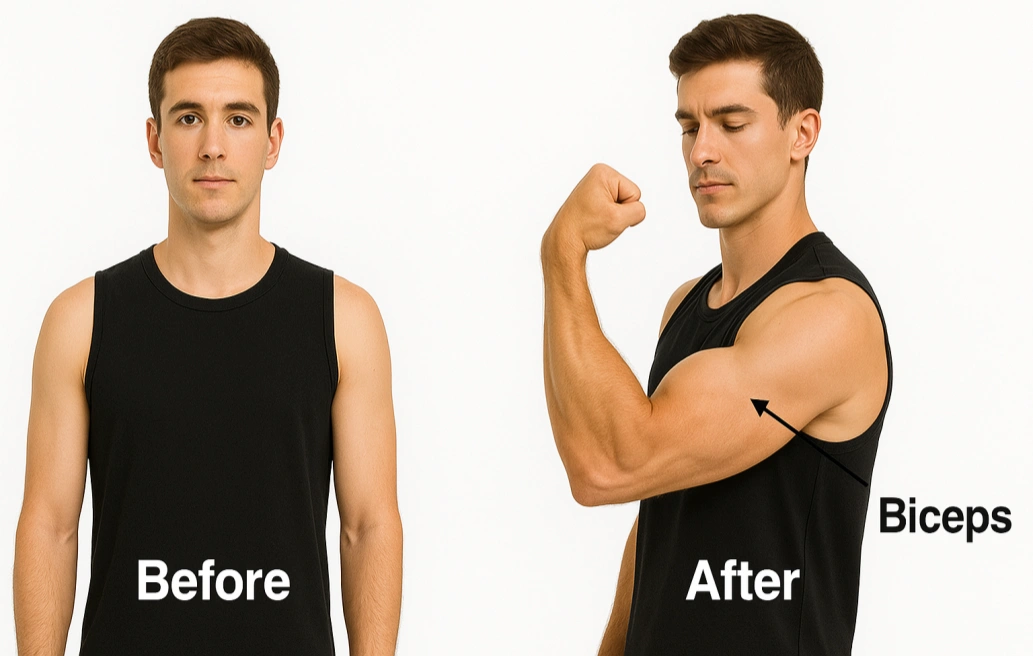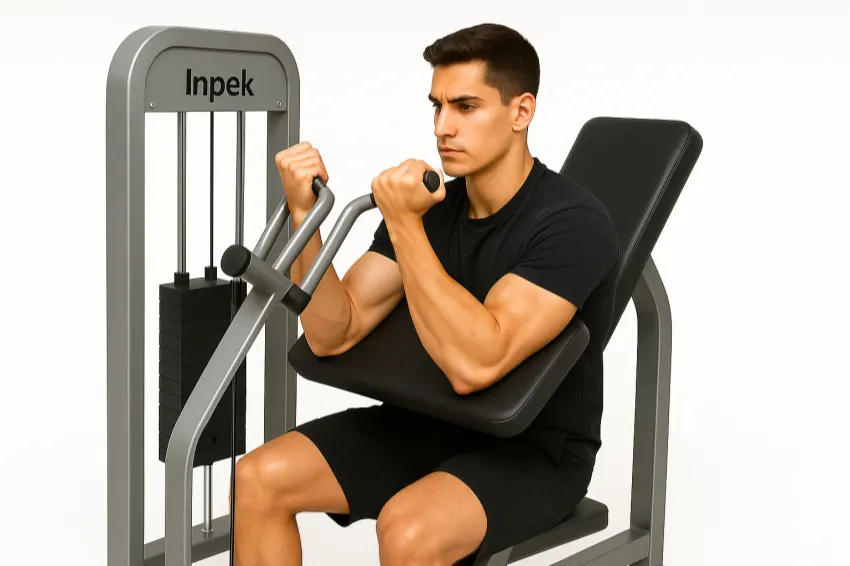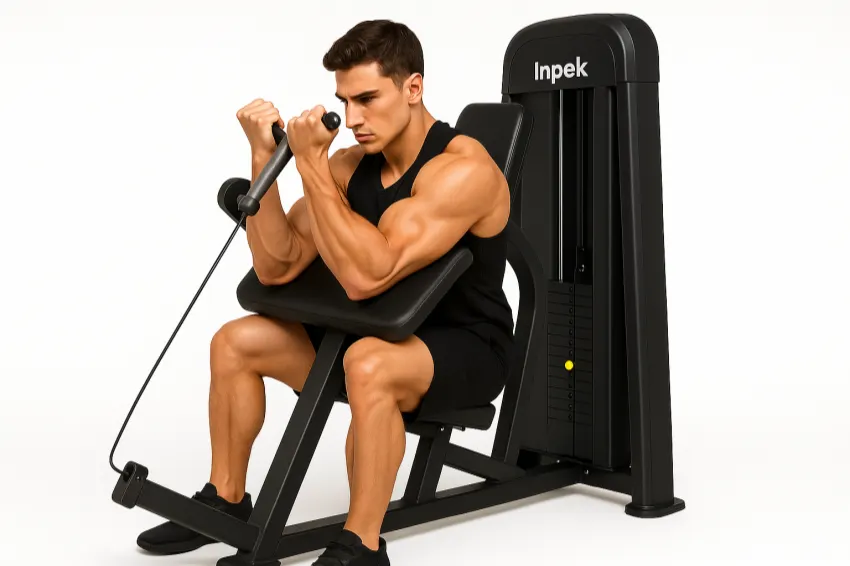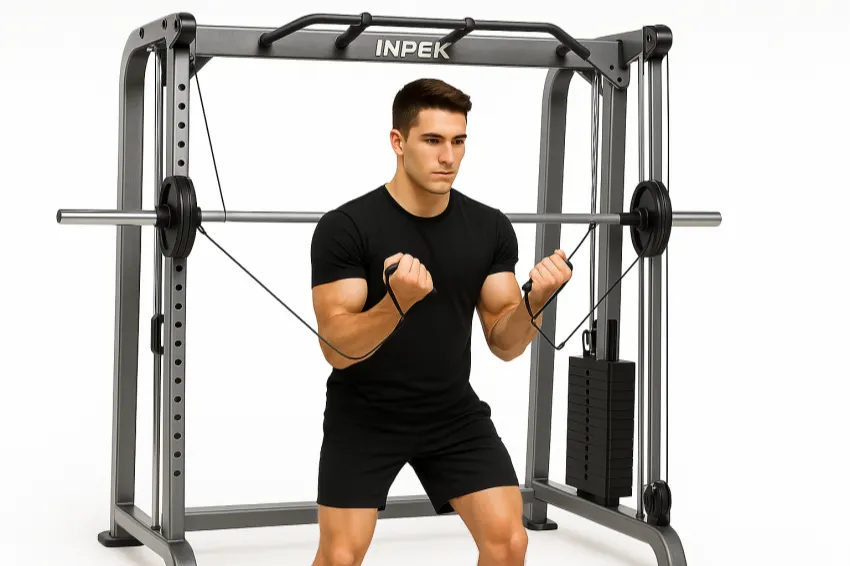
I trained my biceps every week — dumbbells, cables, curls, all of it.
I tracked my sets, added weight, and pushed hard.
But no matter how consistent I was, my arms didn’t look the way I wanted.
No peak. No line. Just size without shape.
It wasn’t until I stopped focusing on doing more, and started doing it better — with tools like the bicep curl machine — that things began to change.
This is exactly how I fixed it, one machine, one adjustment at a time.
For months, I followed every rule.
More reps. More weight. Perfect form.
But every session ended the same:
My shoulders were sore. And forearms were pumped.
My biceps? Barely anything.
That’s when I realized: I wasn’t undertraining. I was just training the wrong way.
So I did something different — I skipped the dumbbells and sat down at the seated bicep curl machine.
No momentum. No cheating. Just a slow, fixed path that forced my arms to actually work.
I started using it twice a week —3 to 4 sets of 10 to 12 reps, every time.
Lighter weight than I was used to, but every rep had rules: 2 seconds up. 3 seconds down.
I kept my elbows pinned, my wrists locked, my core tight.
By the third set, my biceps were shaking.
It didn’t look impressive — but it felt completely different.

That’s when it clicked.
Finally, I had control.
I could feel the muscle doing the work.
But even then, something was missing. I was moving the weight. I still wasn’t squeezing it.
The seated bicep curl machine gave me control — but control alone wasn’t enough.
I wanted to feel that deep, tight contraction at the top of every rep.
The kind that makes your biceps feel like they’re about to cramp.
The kind that lingers after the set is over.
So I switched to the incline bicep curl machine — a version with a slightly leaned-back seat and arm support that locks you in place.
With no room to cheat, every rep had to be intentional — slow, tight, and clean.
This one felt different immediately.
I started using it once or twice a week, right after my main curls.
4 sets of 8–10 reps, with a full 2-second squeeze at the top of every single one.
Lighter weight than usual — but absolutely zero momentum.

At first, it just burned.
By the second week, my biceps were locking up at the top of every set.
Not just lifting the weight — but actually squeezing it.
That feeling changed everything.But even with the control and the squeeze…
My arms still didn’t look the part.
I had to fix the shape next.
At this point, I had control.
I had squeeze.
But every time I looked in the mirror… my biceps still looked round.
No split down the middle.
No peak from the side.
Just solid, soft curves.
That’s when I realized: I’d been training the muscle — but not its shape.
So I started experimenting with angles.
I set up the flying bird combination trainer equipment with high pulleys, stood in the middle, and curled across my chest.
Technically, it’s still a bicep curl machine — just one that hits from a completely different angle.
I turned it into my finisher — something I’d hit at the end of every arm day.
3 sets of 12–15, lighter weight, but with full stretch at the start and a tight contraction at the end.
Sometimes I’d even drop the weight halfway through the set just to keep the tension alive.
No rest. No release. Just continuous burn.

Every rep started with that wide stretch, and ended with my biceps feeling tight and twisted.
I wasn’t just lifting anymore — I was carving.
Two weeks in, the difference showed.
Through all of that — controlling the movement, locking in the squeeze, and changing the angle — my training finally paid off.
My arms didn’t just grow in size.
They finally started to show real structure — a visible split, a sharper peak, and that trained, athletic look I’d been chasing for over a year.
None of these are flashy.
But together, they made all the difference.
If your arms feel strong but still don’t look it,
maybe it’s not your effort that needs to change —
maybe it’s your execution.
That was the shift that changed everything for me.
And now, for the first time, my arms look like I actually train them.
It depends on your fitness level and how you’re lifting it.
For beginners, curling 50 lbs on a machine (especially for 10–12 reps with good form) is solid progress.
For intermediate or advanced lifters, 50 lbs might be more of a warm-up.
What really matters: controlled reps, full range of motion, and consistent tension — not just the number.
Yes — if you’re training with intent.
3×10 is a solid baseline, especially for beginners or during a full-body program.
Make sure each set gets challenging by the final reps (but not to failure every time).
For more growth over time, try adding:
More volume (like 4 sets or a second biceps exercise)
Slower negatives
Shorter rest between sets
Drop sets or supersets
I’m Jessica Camp, a passionate fitness enthusiast and the creative force behind Inpek Fitness’s content. With over a decade in the fitness industry, I combine my expertise in exercise science with a deep knowledge of commercial gym equipment. I’m dedicated to promoting health and wellness by sharing valuable tips, training techniques, and the latest trends in Pin Loaded Machines, Plate Loaded Machines, Multi Function Gym Machines, Gym Multi, and Free Weights. Whether you’re a gym owner or a fitness enthusiast, my articles are crafted to inspire and empower you to reach your fitness goals. When I’m not writing, I love working out and exploring innovative fitness solutions.
Looking to enhance your gym with premium equipment? Have inquiries or ideas? Complete the form below to engage with our expert team. We’ll work with you to realize your fitness facility goals efficiently and effectively.